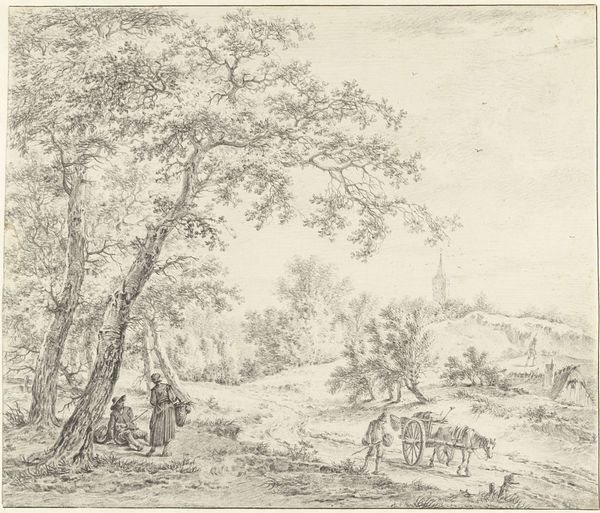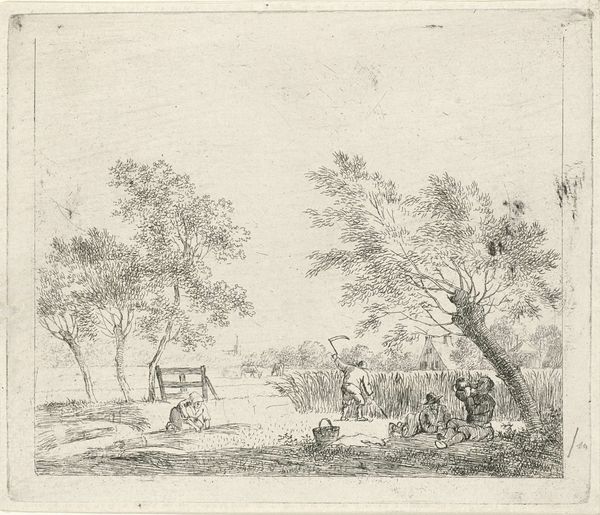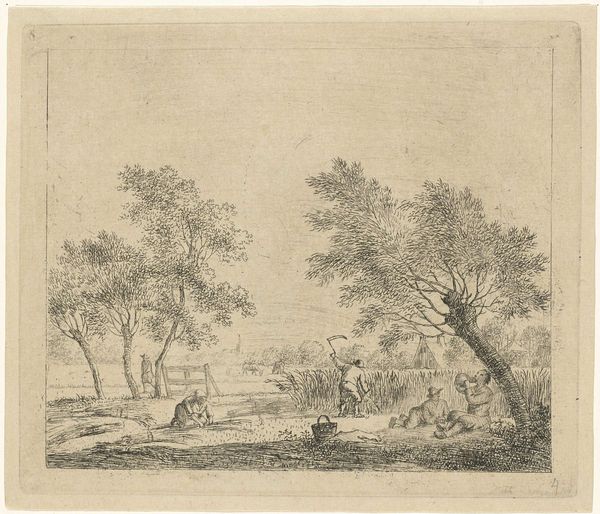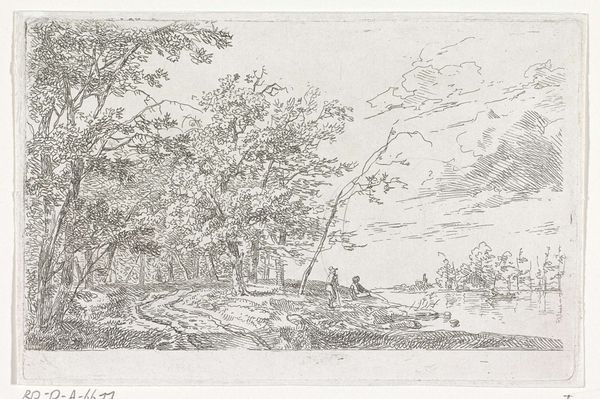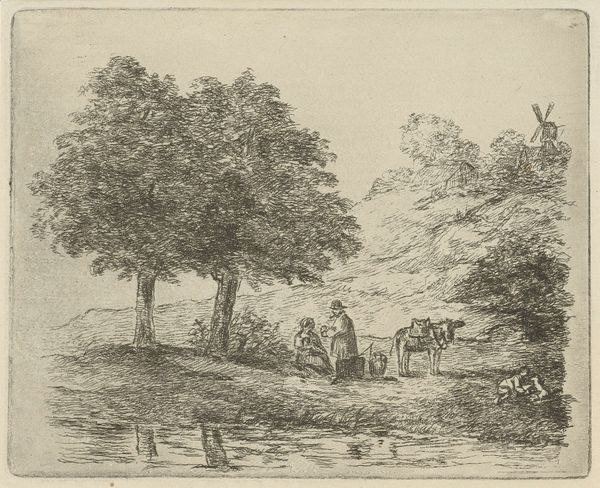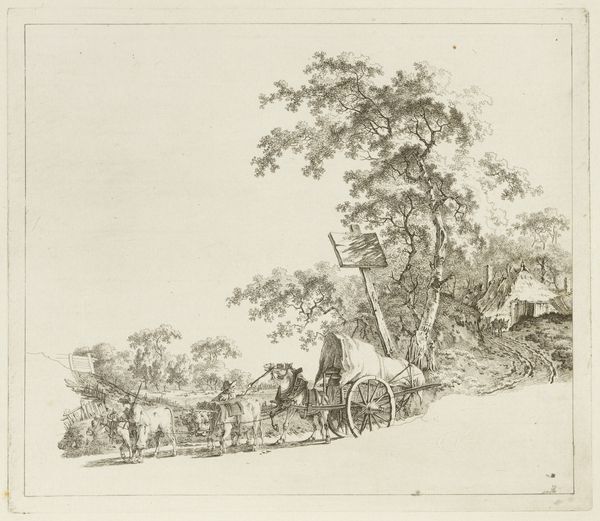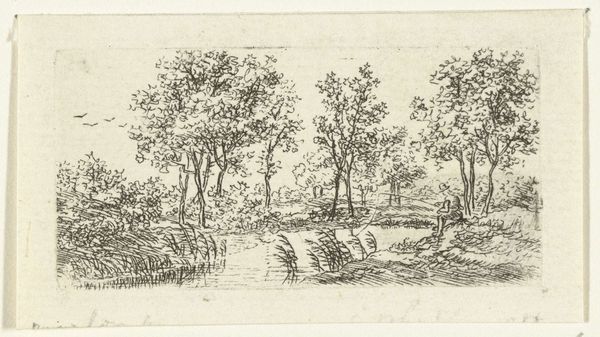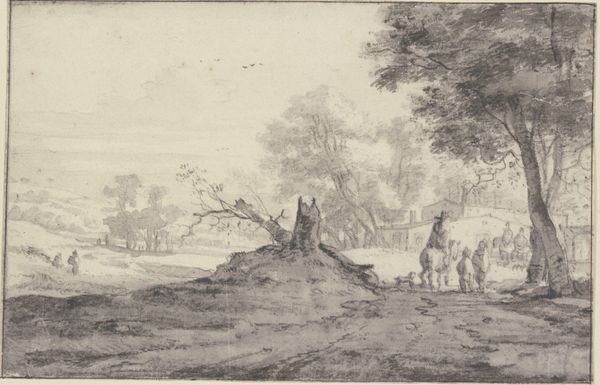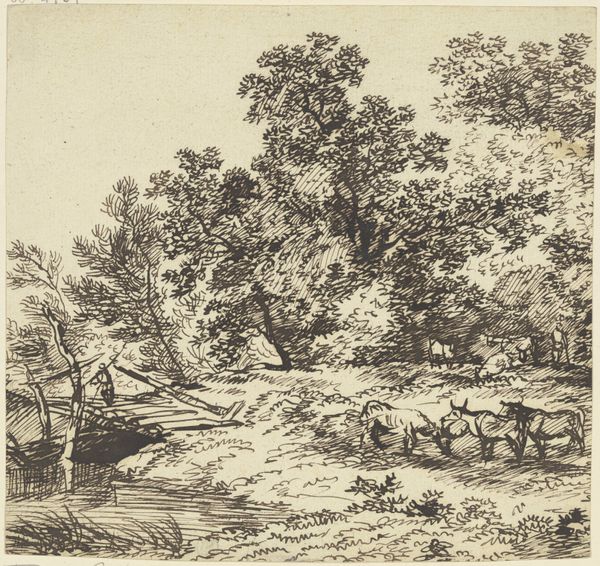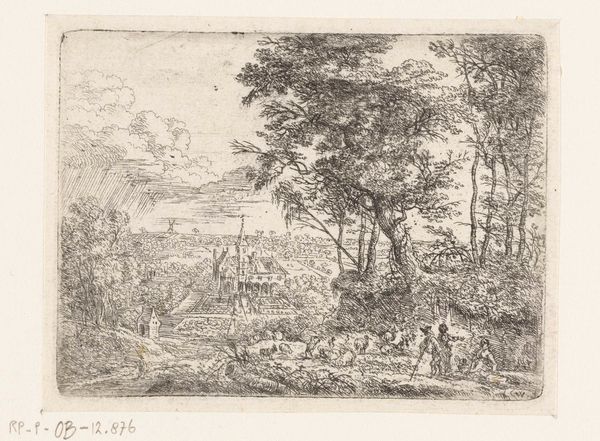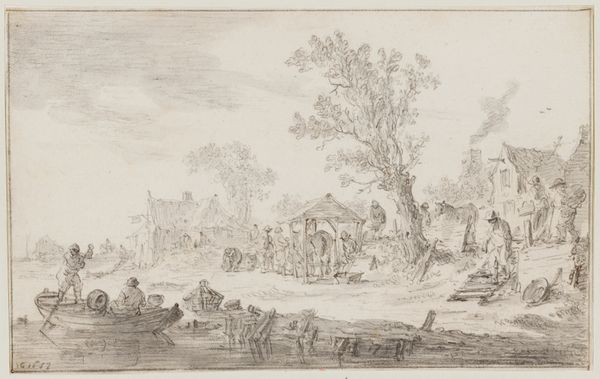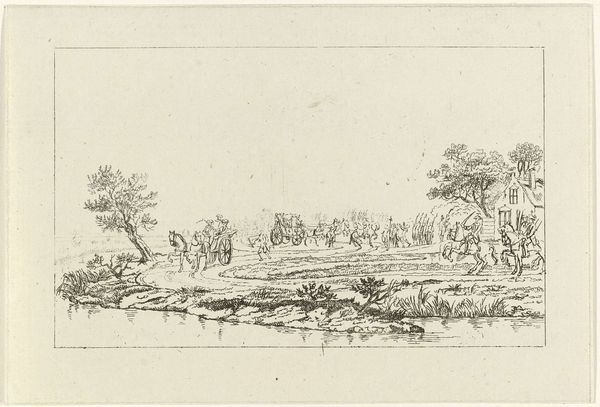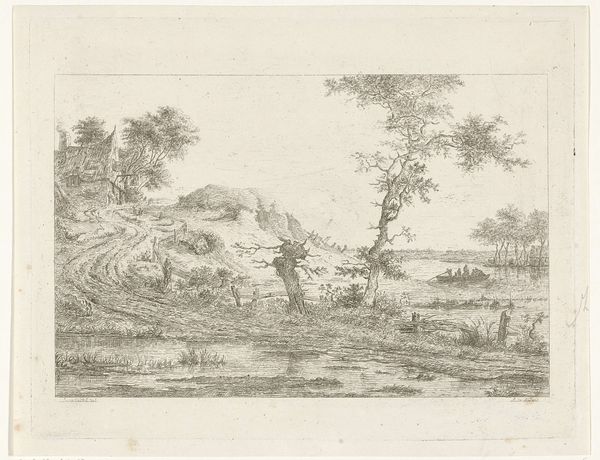
Dimensions: height 257 mm, width 299 mm
Copyright: Rijks Museum: Open Domain
Curator: Immediately, I’m struck by the stillness in this print. Despite depicting a scene of labor, there’s a quiet calm that permeates the landscape. Editor: That's interesting. Standing before Barend Hendrik Thier's etching, "Landschap met ingespannen runderen en een paard die een kar trekken" or "Landscape with Yoked Cattle and a Horse Pulling a Cart", created around 1780, I'm more drawn to how it reflects Dutch agrarian life and the role of animals in that period. Curator: Agrarian life yes, but look at the rendering of the foliage, the delicate linework... It seems almost idyllic, less a document of labor and more a romanticized vision. What’s the emotional register, the subtext that resonates today, do you think? Editor: Well, for me, the repetition of the yoked pairs resonates symbolically. It underscores ideas around partnership, responsibility, and the reliance on the natural world to fulfill human needs, all potent symbolic forces. Also, consider the signpost, almost as a heraldic emblem of orientation. Curator: Orientation, exactly! What would the consumption of these images mean in a burgeoning print market? This etching exists, certainly, as art, but also to proliferate ideas about rural life and the value of labor, influencing urban views of the countryside. Editor: True, the cultural importance of print at this moment must not be overlooked. Beyond its face value, do you consider any inherent power dynamics, social codifications in this pastoral image? I would wager that landscape images have continuously provided escapism as well as visual manifestations of nationhood and ownership. Curator: Power dynamics definitely come into play, as ownership and the aesthetics of land management were potent markers of social standing. But isn't there something eternally resonant about these prints that outlives any era's intent? The yearning for simpler times, or communion with nature that persists. Editor: I think so. Even without specific cultural references, that aspiration lives on. But my perspective pushes us to also consider how imagery from any period embeds both encoded visual strategies for social influence and potent enduring archetypes. Curator: Right, considering its multifaceted legacy enriches our viewing of this modest, yet poignant etching. It’s a dance between art and influence, and in unpacking those intentions and symbols, it allows viewers today to have richer understandings of the art of yesterday. Editor: Ultimately it’s in this exchange of ideas where true appreciation for art emerges, and each analysis and perspective adds unique depth to any given viewing.
Comments
No comments
Be the first to comment and join the conversation on the ultimate creative platform.
